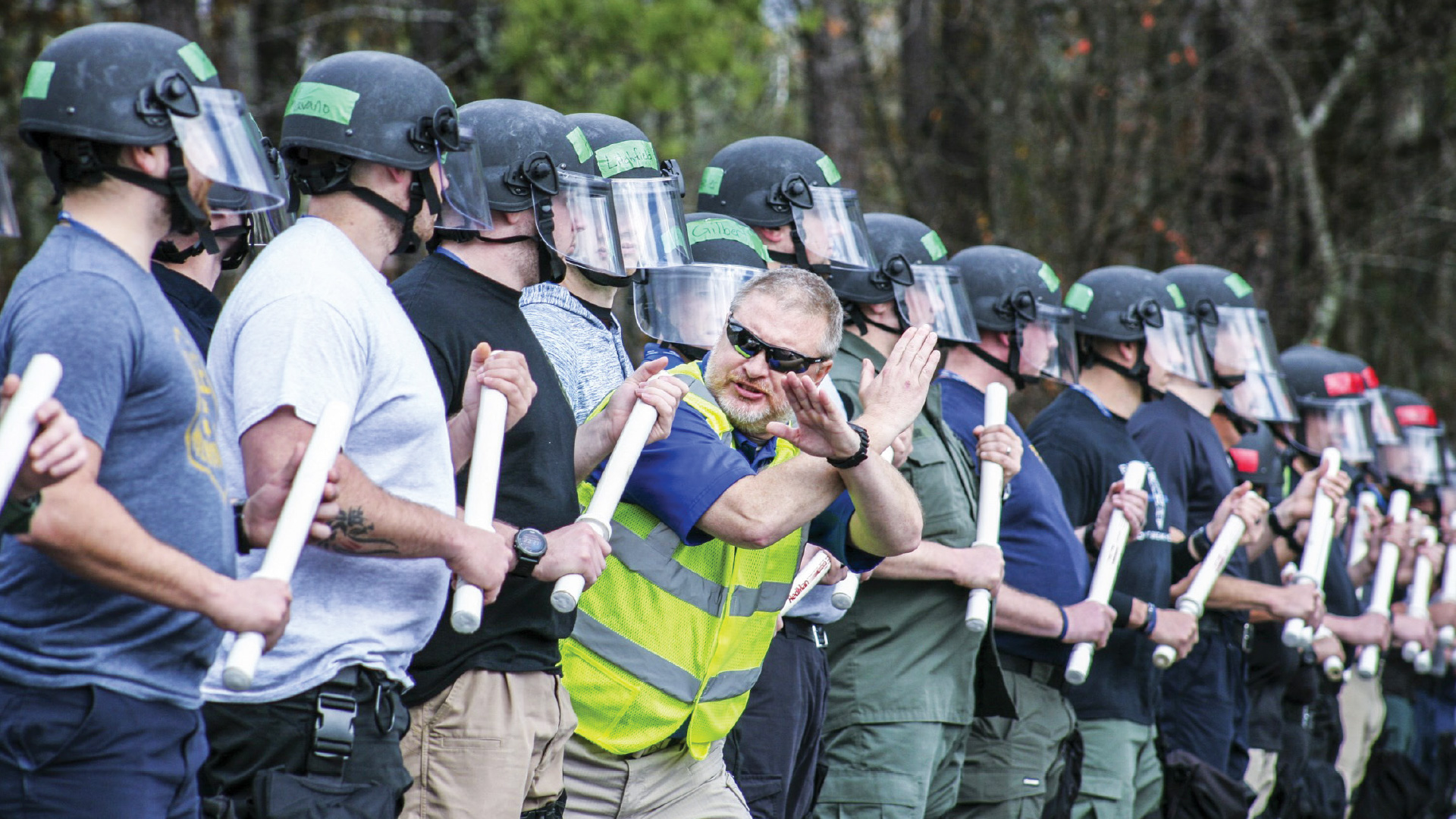

At the Federal Emergency Management Agency’s Center for Domestic Preparedness (CDP), they say they “Train the Best for the Worst.”
“Our nation’s first responders — law enforcement officers, firefighters and health-care workers — are the primary and initial ones Americans turn to when disasters occur. We want to ensure they are fully prepared to handle their worst day on the job, whether that comes in the form of a hazardous material spill, a tornado or hurricane, or a terrorist event,” CDP Superintendent Tony Russell says.
The center provides advanced all-hazards training to about 60,000 first responders annually through approximately 50 resident and non-resident courses and an equal number of online offerings.
Training at the CDP is provided free of charge by FEMA to state, local, tribal and territorial emergency responders, including round-trip transportation, meals and lodging.
Its library of classes spans a wide range of topics — from hazardous material detection and public order policing to disaster and mass casualty response.
Jason Ely, a detective with the Los Angeles County Sheriff’s Department, took numerous CDP courses during his time with the agency’s Threat Interdiction Unit. While he was with the TIU, his duties included tactical hazardous material response and the unit required its team members to take two of the CDP’s hazardous material courses.
To enhance his skills and further assist his department, Ely continued to take courses past the requirement, focusing on chemical, biological, radiological, nuclear and explosive (CBRNE) detection, mitigation and recovery.
“I looked at it as sustainment training. It makes no sense to go to a course once and expect to forever retain the information,” Ely says.

As part of his training, Ely participated in exercises at the CDP’s Chemical, Ordnance, Biological and Radiological Training Facility (COBRATF) — the only site in the nation where civilian responders can train with toxic chemical agents and biological materials.
“The hands-on training received by going into the COBRA gave me a level of confidence I wouldn’t have had otherwise,” he says. “You can’t get that level of confidence anywhere else.”
Ely also attended the CDP’s Instructor Training Certification Course, which allows him to teach certain CDP courses he attended to members of his unit and others in his community.
Located on the site of the former Fort McClellan in Anniston, Alabama, the CDP’s campus encompasses many of the former post’s structures.
In addition to the COBRATF, which was once used to train members of the Army’s chemical corps, the center transformed the post’s former hospital into the Noble Training Facility, where health-care providers are taught to manage mass casualty events, treat patients with highly infectious diseases and other advanced preparedness skills.
The CDP also converted a former equipment-issue facility into the Advanced Responder Training Complex (ARTC), where students learn to deal with a wide range of hazards in various settings. The ARTC has an industrial park, a mock subway station and a simulated street scene with offices, businesses and warehouses.
Sergeant Jeff Baker, from the South Carolina Department of Public Safety’s Emergency Management Unit, was introduced to the CDP when he first joined his organization.
“We were looking at changing our training … basically redoing the entire respirator program,” he explains.
Baker has since attended five resident courses at the CDP and says he most benefits from the diversity of the classes, which often include a mix of law enforcement officers, firefighters, paramedics and health-care workers.
“It’s always interesting to see the different approaches of the students from various backgrounds,” he says.
In 2020, when protests and riots occurred throughout the country, many law enforcement agencies turned to public policing training they received from the CDP.
Christian Sturdevant, a training coordinator for the Stockton Police Department in California, has taken several CDP offerings and regularly sends officers through the center’s Field Force Operations course.
“In terms of practicality, the Field Force Operations course is excellent,” Sturdevant says. “The information regarding tactics used by various groups is great and very useful.”

In fact, Sturdevant says his department has integrated information from that and other CDP courses into its mobile field force.
“It’s helped us here in our city,” Sturdevant says. “Every facet of what is taught [by the CDP], we use on our team.”
The center makes training as stress-free as possible by arranging all travel, meals and lodging.
Ely praises the CDP’s all-inclusive model of training, noting the only concern students have is learning.
“Of all the places I’ve been for training, the CDP has been the easiest and most user-friendly,” he says.
The end goal of each course taught at the CDP, according to Russell, is to ensure those who are the first to arrive at any incident or disaster are prepared.
“Whenever anything happens, the first one on the scene, besides the individual, is the first responder,” he said. “We are here to give them the hands-on training needed to save lives and protect property.”
For more information about the CDP, including a complete list of courses and how to register for training, visit cdp.dhs.gov.
As seen in the March 2021 issue of American Police Beat magazine.
Don’t miss out on another issue today! Click below:





